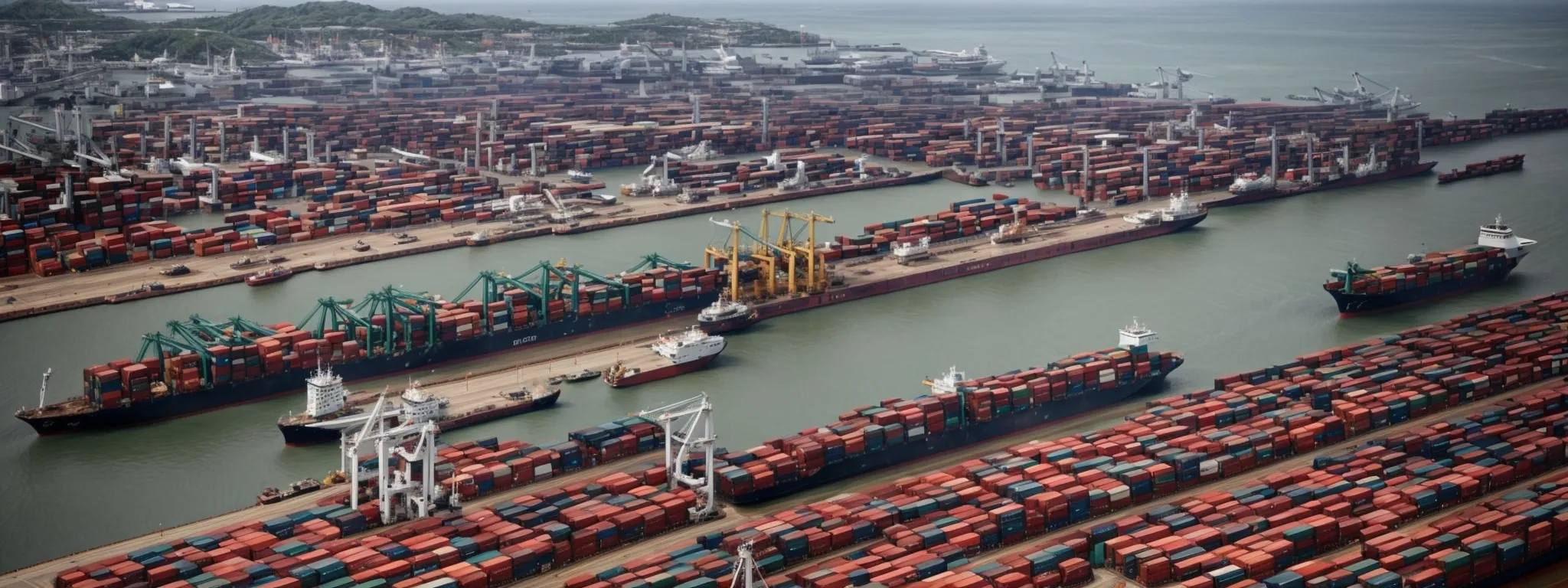

Free trade agreements and bilateral investment treaties play crucial roles in shaping international commerce and investment landscapes. These agreements, often negotiated under the auspices of the World Trade Organization, aim to create free trade areas by reducing tariffs and other barriers to trade. While free trade agreements focus on facilitating exports and imports between nations, bilateral investment treaties provide protection for foreign investors. Both types of agreements have far-reaching implications for global economic relations and the flow of goods and capital across borders. In this article, we’ll explore the key differences between these two important instruments of international economic policy.

Free Trade Agreements (FTAs) play a crucial role in shaping international trade dynamics. These agreements aim to reduce or eliminate trade barriers between participating countries, fostering economic growth and cooperation. FTAs often address complex issues such as rules of origin, customs procedures, and regulatory harmonization. Notable examples include the European Union’s single market and various bilateral agreements worldwide. Understanding the fundamentals of FTAs is essential for businesses and policymakers navigating the intricate landscape of global commerce.
Free Trade Agreements (FTAs) are comprehensive policy instruments designed to facilitate economic cooperation between nations. These agreements aim to reduce or eliminate trade barriers, such as tariffs and quotas, while promoting market access and protecting intellectual property rights.
The purpose of FTAs extends beyond mere trade liberalization, encompassing broader economic and strategic objectives. Notable examples include the North American Free Trade Agreement and the African Continental Free Trade Area, which seek to foster regional integration, enhance competitiveness, and stimulate economic growth among participating countries.
There are several major free trade agreements shaping global commerce today. The European Union’s single market stands out as a comprehensive example of regional economic integration, facilitating free trade, foreign direct investment, and harmonized regulations among member states. Similarly, the Comprehensive and Progressive Agreement for Trans-Pacific Partnership (CPTPP) exemplifies multilateral cooperation in trade facilitation across the Pacific Rim.
You should note that negotiation processes for these agreements often span years, addressing complex issues such as tariff reductions, intellectual property rights, and dispute resolution mechanisms. The United States-Mexico-Canada Agreement (USMCA), which replaced NAFTA, showcases the evolution of free trade pacts to incorporate modern economic considerations. Here’s a comparison of some notable free trade agreements:
| Agreement | Member Countries | Key Features |
|---|---|---|
| European Union | 27 European countries | Single market, common currency (Euro) |
| CPTPP | 11 Pacific Rim countries | Tariff reductions, digital trade provisions |
| USMCA | United States, Mexico, Canada | Updated labor and environmental standards |

You’ll find that Bilateral Investment Treaties (BITs) serve a distinct purpose from Free Trade Agreements, focusing specifically on protecting and promoting cross-border investments. Unlike FTAs, which cover a broad spectrum of trade-related issues such as goods and services, government procurement, and geographical indications, BITs concentrate on safeguarding foreign investors’ property rights. These treaties don’t typically address tariff reductions or harmonized system classifications. Instead, they establish legal frameworks for resolving disputes between investors and host countries, offering a crucial layer of protection in the complex landscape of international investment.
You’ll find that Bilateral Investment Treaties (BITs) aim to protect and promote foreign investments between two countries. These agreements establish a framework for dispute resolution, ensuring fair treatment of investors and safeguarding against expropriation. BITs often include provisions for national treatment, most-favored-nation status, and fair and equitable treatment, which are crucial for fostering investor confidence in regions like West Africa.
BITs typically address issues beyond the scope of the General Agreement on Tariffs and Trade, focusing on investment-specific concerns rather than broader trade matters like import regulations or border control. Key features of BITs include investor-state dispute settlement mechanisms, transfer of funds provisions, and performance requirements prohibitions. Many countries maintain a database of their BITs to provide transparency and facilitate access to these important legal instruments.
BITs and FTAs differ significantly in their scope and application. While FTAs focus on broad commerce issues and regional integration, BITs specifically address investment protection and promotion between two countries. This targeted approach makes BITs particularly valuable for least developed countries seeking to attract foreign capital.
The Comprehensive Economic and Trade Agreement (CETA) between Canada and the EU exemplifies how modern trade pacts can incorporate elements of both FTAs and BITs. However, BITs remain distinct in their emphasis on investment law, providing a specialized legal framework for resolving disputes between investors and host states, unlike the more general trade provisions found in FTAs.

Free Trade Agreements (FTAs) profoundly impact participating economies, reshaping supply chains and addressing technical barriers to trade. Research on FTAs between diverse regions, such as Korea and Central America, reveals both benefits and challenges. These agreements often stimulate economic growth and foster international cooperation, but they also face criticism for potential negative effects on certain industries and labor markets. Understanding the complex economic impacts of FTAs is crucial for policymakers and businesses navigating the global trade landscape.
You’ll find that Free Trade Agreements (FTAs) offer significant benefits to participating economies, particularly in regions like Central Africa. By reducing trade barriers and fostering economic integration, FTAs counteract protectionism and stimulate economic growth. These agreements often lead to increased market access, improved competitiveness, and enhanced foreign direct investment flows.
FTAs also promote transparency in trade relations, benefiting both businesses and consumers. For instance, the East African Community has experienced increased intra-regional trade and economic development through its customs union and common market protocols. By harmonizing regulations and standards, FTAs create a more predictable business environment, encouraging innovation and productivity gains across various sectors.
You’ll encounter various challenges and criticisms when examining Free Trade Agreements (FTAs). Critics argue that FTAs can lead to job losses in certain sectors, particularly in industries facing increased competition from imports. Economists often debate the long-term effects of these agreements on income distribution and labor markets.
You’ll find that implementing FTAs can be complex, requiring significant adjustments to customs union procedures and the introduction of certificate of origin requirements. These changes may create additional administrative burdens for businesses, potentially impacting contract negotiations and even citizenship considerations in some cases. Here’s a table summarizing key challenges associated with FTAs:
| Challenge | Description | Potential Impact |
|---|---|---|
| Job displacement | Increased competition in certain sectors | Short-term unemployment, industry restructuring |
| Administrative complexity | New customs procedures and documentation | Increased costs for businesses, trade delays |
| Regulatory harmonization | Aligning standards across countries | Potential compromises on national policies |

You’ll find that Bilateral Investment Treaties (BITs) play a crucial role in protecting foreign investments across borders, particularly in regions like Latin America and the Southern African Development Community. These agreements provide a legal framework for risk mitigation and dispute resolution, fostering a conducive environment for cross-border investments. By examining case studies of successful BITs, such as those within the Gulf Cooperation Council, you’ll gain insights into their impact on investment flows and economic liberalization. Understanding the nuances of BITs is essential for investors and policymakers navigating the complex landscape of international investment relations.
You’ll find that Bilateral Investment Treaties (BITs) offer crucial protection for foreign investments across borders. These treaties establish legal frameworks that safeguard investors’ rights, addressing concerns such as expropriation, discrimination, and fair treatment. BITs play a vital role in sectors like textiles, where cross-border investments are common, and can significantly impact employment in host countries.
The Regional Comprehensive Economic Partnership (RCEP) exemplifies how modern trade agreements can incorporate investment protection provisions similar to those found in traditional BITs. These agreements aim to balance investor rights with consumer protections and host country interests. Here’s a comparison of key features in BITs and comprehensive trade agreements:
| Feature | Traditional BIT | Comprehensive Agreement (e.g., RCEP) |
|---|---|---|
| Scope | Investment protection | Trade and investment |
| Dispute resolution | Investor-state arbitration | Various mechanisms |
| Regulatory flexibility | Limited | More balanced approach |
You’ll find that successful Bilateral Investment Treaties (BITs) have significantly impacted the balance of trade and income flows between partner countries. The BIT between Guinea and a major industrialized nation serves as a prime example, demonstrating how these agreements can foster foreign direct investment in developing economies. Through careful evaluation, economists have identified substantial increases in cross-border capital flows and technology transfer resulting from this agreement.
You should note that the enabling clause in many BITs has played a crucial role in their success, providing flexibility for least-developed countries to implement pro-investment policies gradually. This approach has allowed nations to tailor their investment frameworks to local conditions while still benefiting from increased foreign capital inflows. The positive outcomes observed in Guinea’s case highlight the potential for BITs to serve as effective tools for economic development when properly structured and implemented.

You’ll navigate a complex legal landscape when dealing with Free Trade Agreements (FTAs) and Bilateral Investment Treaties (BITs). These international instruments, crucial for sectors like manufacturing and financial services, require a deep understanding of international economics and legal frameworks. You’ll encounter various documents, from licenses to dispute resolution mechanisms, each playing a vital role in governing cross-border trade and investment. As you explore the legal intricacies of FTAs and the enforcement challenges of BIT provisions, you’ll gain insights into how these agreements shape global commerce and protect foreign investments.
You’ll find that Free Trade Agreements (FTAs) operate within a complex legal framework, incorporating elements of international law, domestic regulations, and specialized trade provisions. Australia’s numerous FTAs exemplify how these agreements can address specific regional concerns while adhering to broader international trade principles established by organizations like the European Free Trade Association.
You must navigate intricate legal landscapes when dealing with FTAs, considering aspects such as inspection protocols for goods, transport regulations, and country-specific requirements. For instance, Togo’s participation in regional trade agreements highlights the importance of understanding how FTAs interact with local legal systems and economic priorities. Here’s a table illustrating key legal components of FTAs:
| Legal Component | Description | Example |
|---|---|---|
| Dispute Resolution Mechanisms | Procedures for resolving trade conflicts | WTO-style panels or specialized arbitration |
| Rules of Origin | Criteria for determining product origin | Value-added percentages, tariff shift rules |
| Sanitary and Phytosanitary Measures | Standards for food safety and plant health | Inspection protocols, certification requirements |
You’ll encounter significant challenges when enforcing Bilateral Investment Treaty (BIT) provisions, particularly in regions like Central Asia and Latin America. The complexities arise from varying legal systems, political landscapes, and economic priorities among signatory nations, making uniform enforcement a daunting task.
You must navigate intricate dispute resolution mechanisms when dealing with BIT enforcement, often involving international arbitration tribunals. Countries like Mali, for instance, may face unique challenges in implementing BIT provisions due to limited institutional capacity and competing development priorities, highlighting the need for tailored approaches to BIT enforcement in diverse economic contexts.

You’ll witness a dynamic shift in global trade dynamics as Free Trade Agreements (FTAs) and Bilateral Investment Treaties (BITs) evolve to meet new challenges. The interplay between these two instruments shapes the future of international commerce, with recent trends indicating a move towards more comprehensive and inclusive agreements. As you examine the latest developments in trade pacts and investment protection, you’ll gain insights into how these agreements adapt to technological advancements, changing geopolitical landscapes, and emerging economic sectors. Understanding these trends is crucial for predicting the future trajectory of FTAs and BITs in shaping global trade relationships and investment flows.
You’ll observe a shift towards more comprehensive and inclusive trade agreements in recent years. Modern FTAs increasingly incorporate provisions on digital trade, environmental protection, and labor standards, reflecting the evolving nature of global commerce and societal concerns.
You’ll notice a growing trend of regional trade agreements that encompass multiple countries, such as the Regional Comprehensive Economic Partnership (RCEP) in Asia-Pacific. These agreements often aim to streamline trade rules across larger economic blocs, potentially reducing the need for numerous bilateral treaties.
You’ll witness the evolution of Free Trade Agreements (FTAs) and Bilateral Investment Treaties (BITs) as they adapt to the changing landscape of global commerce. These agreements will likely become more sophisticated, incorporating provisions for emerging technologies, digital trade, and sustainable development.
You’ll observe a trend towards convergence between FTAs and BITs, with more comprehensive agreements addressing both trade and investment issues. This evolution may lead to the development of new hybrid instruments that better serve the needs of modern economies and address complex global challenges:
Understanding the differences between Free Trade Agreements (FTAs) and Bilateral Investment Treaties (BITs) is crucial for navigating the complex landscape of international trade and investment. FTAs focus on reducing trade barriers and promoting economic cooperation among participating countries, while BITs specifically protect and promote cross-border investments between two nations. These agreements play vital roles in shaping global commerce, influencing economic growth, and safeguarding foreign investments across borders. As international trade evolves, both FTAs and BITs will continue to adapt, incorporating new provisions to address emerging challenges in the digital age and sustainable development.

As a lawyer and the founder of Transnational Matters, Davy Aaron Karkason represents numerous international companies and a wide variety of industries in Florida, the U.S., and abroad. He is dedicated to fighting against unjust expropriation and unfair treatment of any individual or entity involved in an international matter. Mr. Karason received his B.A. in Political Science & International Relations with a Minor in Criminal Justice from Nova Southeastern University. If you have any questions about this article you can contact Davy Karkason through our contact page.